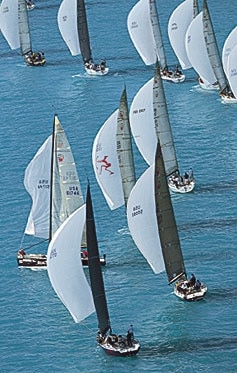
When to Jibe-n-Run
The first jibe after rounding the top mark is always a tough call. When I look at Real Tick’s situation in our photo sequence, here’s

The first jibe after rounding the top mark is always a tough call. When I look at Real Tick’s situation in our photo sequence, here’s
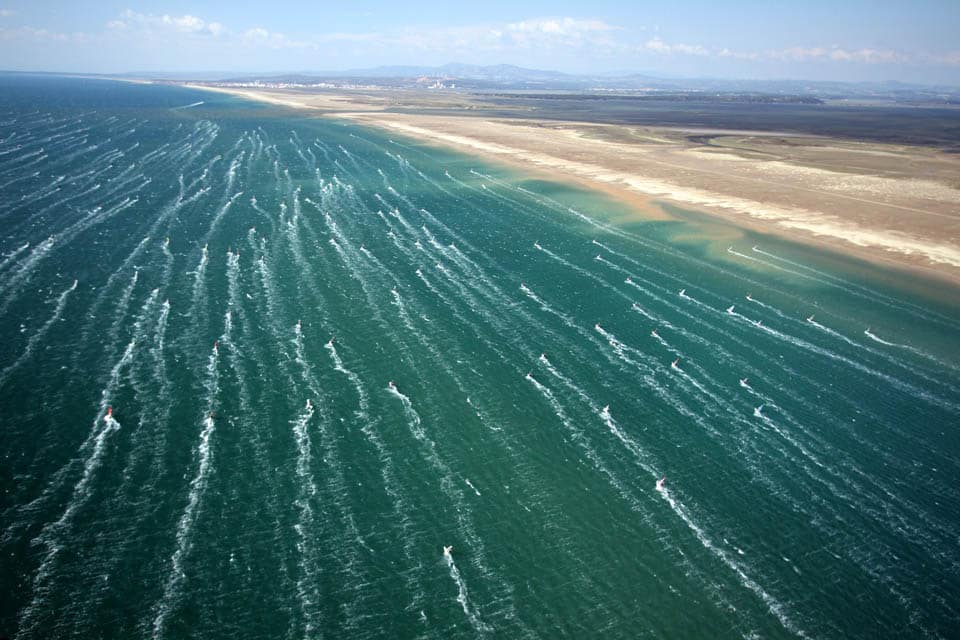
Which side of the first beat to favor is often the most important, and difficult, choice in a race. A veteran America’s Cup tactician offers his advice on making this dicey decision.
When you see a puff approaching, make four decisions about it and succinctly relay what you decide to your helmsman and trimmer(s). Even if it’s
Calling puffs downwind is important because you have more flexibility to sail high or low to meet approaching puffs. When calling puffs downwind, ask yourself
1. Your boat came equipped to rig a mainsheet bridle. If you want to get to the windward mark on time, use a mainsheet bridle.2.
1. All US Sailing Junior events using supplied Radial sails will use Mark VI Radial sails. This sail needs a bit more mainsheet tension than
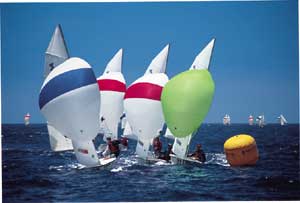
What you need to know to win in Milwaukee
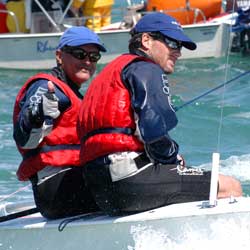
When Augie Diaz hit the 2003 Snipe winter circuit, he caught fire, winning three of four events. We talked with him after the final event in Nassau, Bahamas.
1. If your pole is at or near its “J” length (see p. 72), jibe outside. The longer the pole, the better an inside jibe
To win PHRF Class 3 at Key West, the crew of /Tsunami/ had to beat everything from a J/44 to the new Farr 36. Helmsman John Aras tells /SW/ how they did it. From our April 2003 issue.
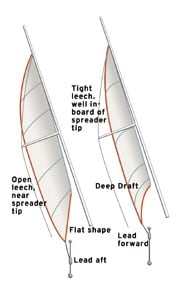
After John Jennings won the St. Francis YC Masters International Masters for the second year, SW turned on the mike and asked him his secrets. From our February 2002 issue.
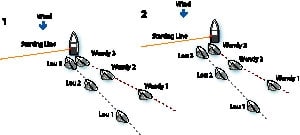
Several readers have written me with questions about how the rules apply between two starboard-tack boats on their final approach to the starting line to

The first jibe after rounding the top mark is always a tough call. When I look at Real Tick’s situation in our photo sequence, here’s

Which side of the first beat to favor is often the most important, and difficult, choice in a race. A veteran America’s Cup tactician offers his advice on making this dicey decision.
When you see a puff approaching, make four decisions about it and succinctly relay what you decide to your helmsman and trimmer(s). Even if it’s
Calling puffs downwind is important because you have more flexibility to sail high or low to meet approaching puffs. When calling puffs downwind, ask yourself
1. Your boat came equipped to rig a mainsheet bridle. If you want to get to the windward mark on time, use a mainsheet bridle.2.
1. All US Sailing Junior events using supplied Radial sails will use Mark VI Radial sails. This sail needs a bit more mainsheet tension than

What you need to know to win in Milwaukee

When Augie Diaz hit the 2003 Snipe winter circuit, he caught fire, winning three of four events. We talked with him after the final event in Nassau, Bahamas.
1. If your pole is at or near its “J” length (see p. 72), jibe outside. The longer the pole, the better an inside jibe
To win PHRF Class 3 at Key West, the crew of /Tsunami/ had to beat everything from a J/44 to the new Farr 36. Helmsman John Aras tells /SW/ how they did it. From our April 2003 issue.

After John Jennings won the St. Francis YC Masters International Masters for the second year, SW turned on the mike and asked him his secrets. From our February 2002 issue.

Several readers have written me with questions about how the rules apply between two starboard-tack boats on their final approach to the starting line to
Sign up for Sailing World emails to receive features on travel destinations, event listings and product reviews as well as special offers on behalf of Sailing World’s partners.
By signing up you agree to receive communications from Sailing World and select partners in accordance with our Privacy Policy. You may opt out of email messages/withdraw consent at any time.